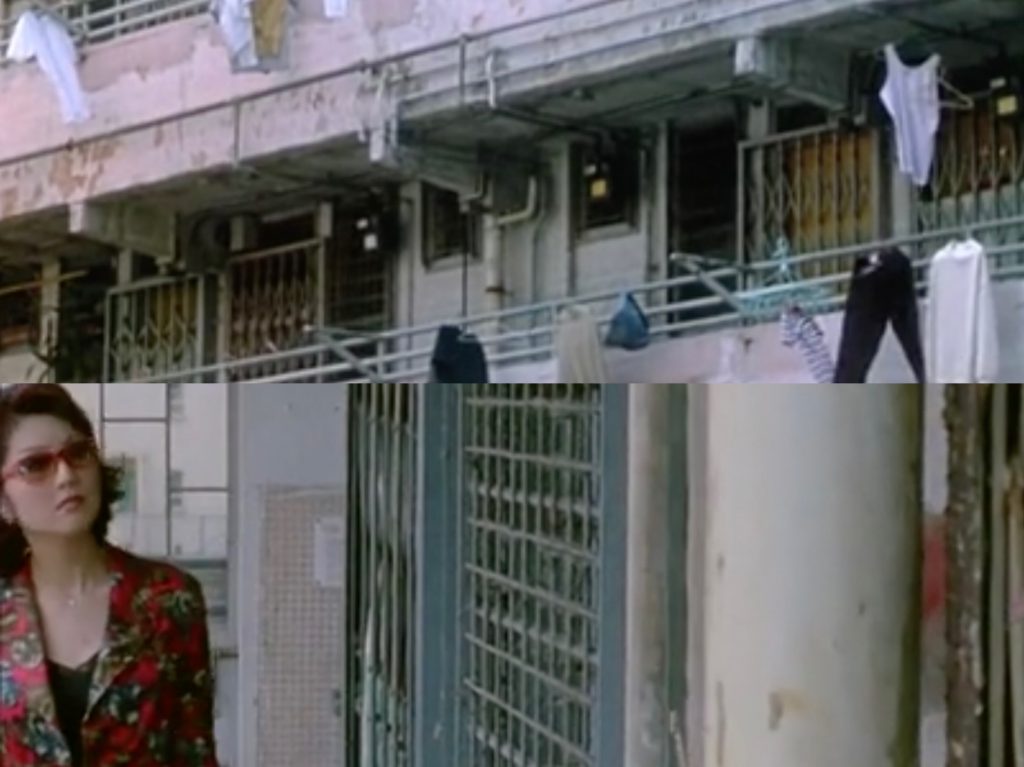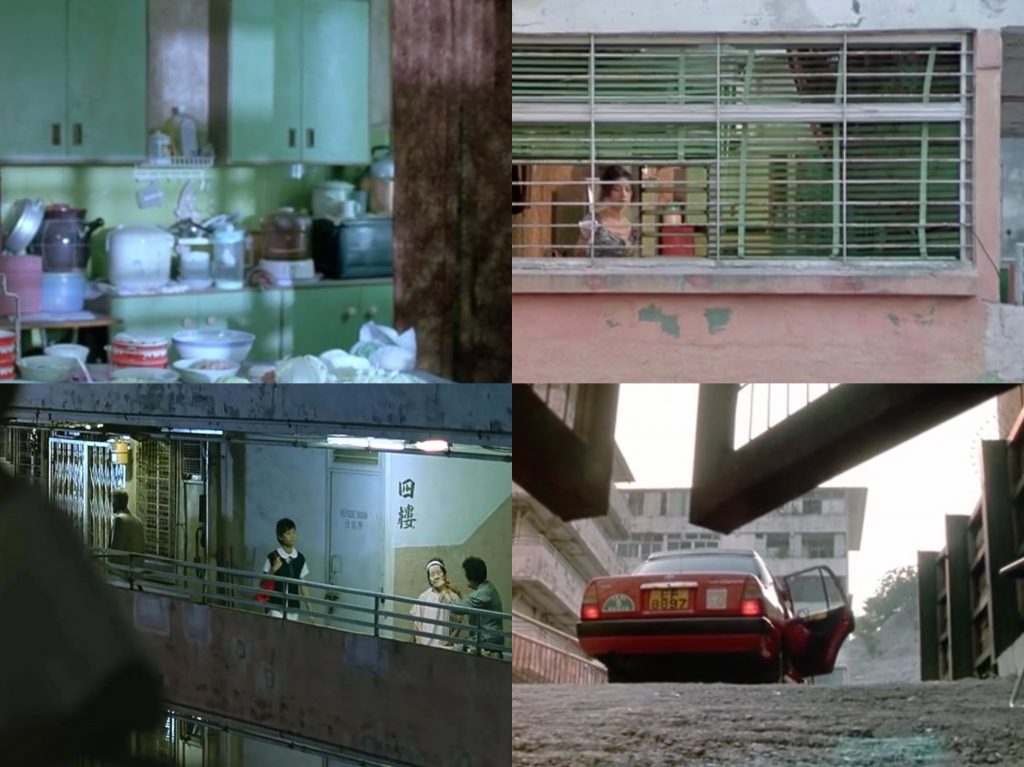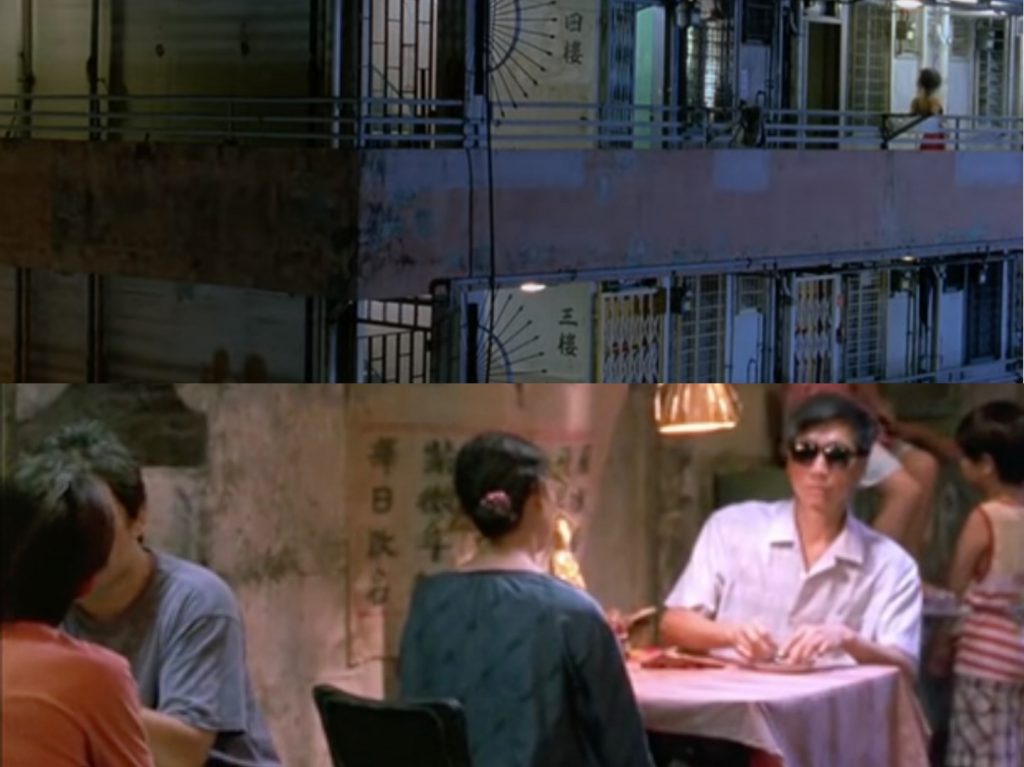DUMPLINGS, FRUIT CHAN (2004)
Shek Kip Mei Estate, Sham Shui Po District, Hong Kong

Dumpling 2004 is a Hong Kong horror film. It is expanded from a short segment in the horror compilation, Three…Extremes, and first released in Germany [1]. In the film, Mrs. Li, a former actress who is losing her beauty yet still longing for old-days passion with her husband, seeks help from Aunt Mei, a local chef who makes special dumplings with fetus inside for rejuvenation.
The story begins with Li first coming to Block 40 of Shek Kip Mei Estate, the apartment where Mei lives, and continues to center around this building from an outside-in perspective every time Li comes requiring more and more fetus dumplings from Mei.
Shek Kip Mei Estate is the first public housing estate in Hong Kong, and the units are famous for its utilitarian ‘H’ configuration, consisting of two residential wings and a central communal lounge area for cooking, sanitary, etc. However, almost the entire estate were demolished in 2007 for redevelopment, only three years after the film is shot, including the block 40 featured in the film.
When I visited the site virtually through a YouTube blogger’s outdoor video, I was shocked by the stark difference between the nowadays gently used, colorful, and modernized estate with the lowery, plain, and molted pink walls of those ‘H’ apartments presented through Dumplings in the past. [2]

Moreover, in the setting of a horror film, the entire estate is filmed to create a gloomy and mysterious filter. Director Chan makes use of techniques like chiaroscuro and green lightening, eg. inside Mei’s kitchen, or shooting angles from baroque or voyeuristic-like perspectives that intensify the Shek Kip Mei Estate, eg. behind windows, beneath the gate, or across corridors.

Meanwhile, in Dumplings, although the ‘H’ shape of the block is not directly revealed, there are several scenes of the common lounge area portraying daily behaviors of residents inside the building, such as adults playing cards or doing hair salons. Such intertwine of daily scenes creates alienation out of familiarity with Shek Kip Mei Estate for the viewers.

As what has been insightfully pointed out by Abbas, “Every building in Hong Kong, however new or monumental, faces imminent ruin, on the premise of here today, gone tomorrow – a logistics that, by contracting time, dispenses even with the pathos of decay.” [3] So, probably more importantly, these precious scenes may signify how Dumplings actually exist as an indispensable and incomparable means of reminiscence for such resettlement architectures in days of pre-modern Hong Kong.
Note:
1.The film Three…Extremes is a 2004 horror film consisting of three individual segments called Dumplings, Cut, and Box, from three asian countries including China, Japan, and South Korea.
2.Abbas M.A, Hong Kong: Culture and the politics of disappearance (pp.87), Hong Kong: Hong Kong University Press
3. [4K] Walk at Shek Kip Mei, Kowloon | New and Old Public housing in Hong Kong, last modified on Jan 6, 2021, https://www.youtube.com/watch?v=z4hG7i8L_ck
— Mengdie Zhou, u3591819
Enjoy reading your field notes and analysis. Appreciate your attempt to bring in ideas on disappearance and chiaroscuro in your discussion of Shek Kip Mei Estate in the film and through a blogger’s visit in 2021. How have you understood Abbas’ point in relation to Hong Kong resettlement housing estates? I would also encourage you to consider more than one perspective by tapping into a greater variety of sources to derive more informed observations from the virtual field trip. What do the virtual tour conducted by OutdoorHongKong share with another one conducted by, for example, March Explorer (https://youtu.be/k9bkyBWOd-c)? Consider the points of view that are subjective and depend on the intentions of the author.
Dear Eunice,
Thanks for your comments.
I have watched another virtual tour suggested in the link, and do notice some differences in various vloggers’ perspectives. For instance, while the original virtual video I found focus more on the architecture and its outset, the video you suggested also pays attention to the podium garden, playground, posters and graffiti, as well as sceneries of the elderly playing chess. I would now change my conclusion slight different from the original one, as I find out that, while the outset of the Shek Kip Mei Estate may have changed after resettlement constructions, residents’ usual activities in this building in reality may coincide with what has been presented in the film (also has the scene of elderly playing chess, kids playing).
Furthermore, regarding Abbas’s idea in relation to the resettlement of Shek Kip Mei, as I have briefly mentioned at the end of my field work notes, the resettlement project may contribute in part to the disappearing city, in this case, Shek Kip Mei Estate in Hong Kong. Yet, I would now disagree slightly with his view, as I find some spirits remain unchanged in the city, even when the appearance of the architecture may have been changed over time.